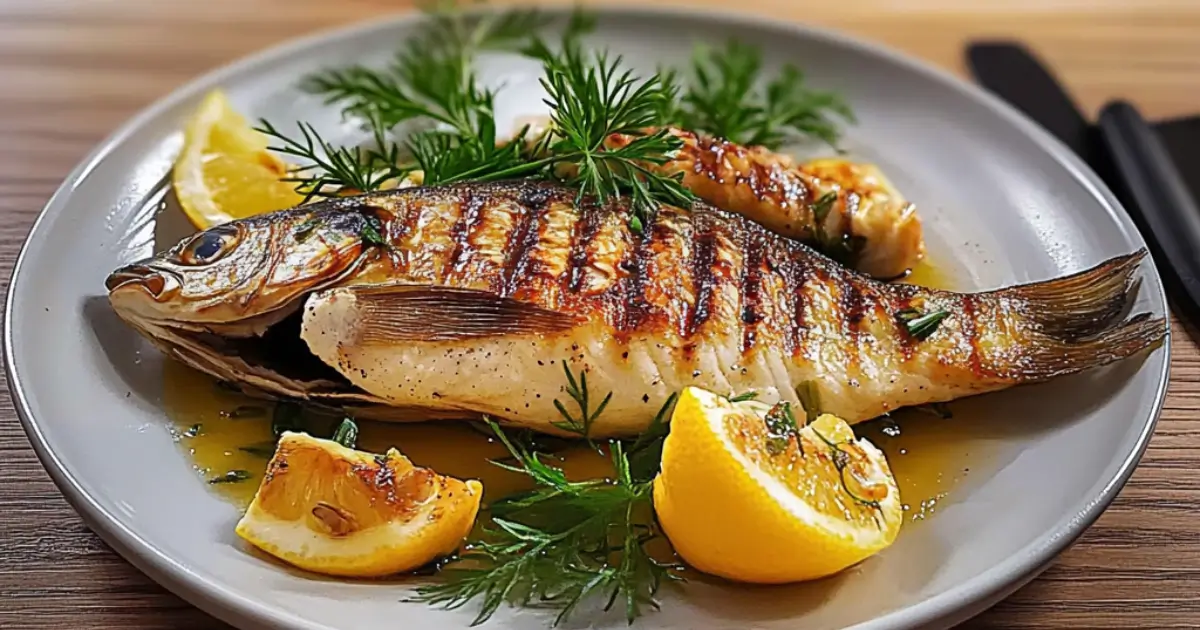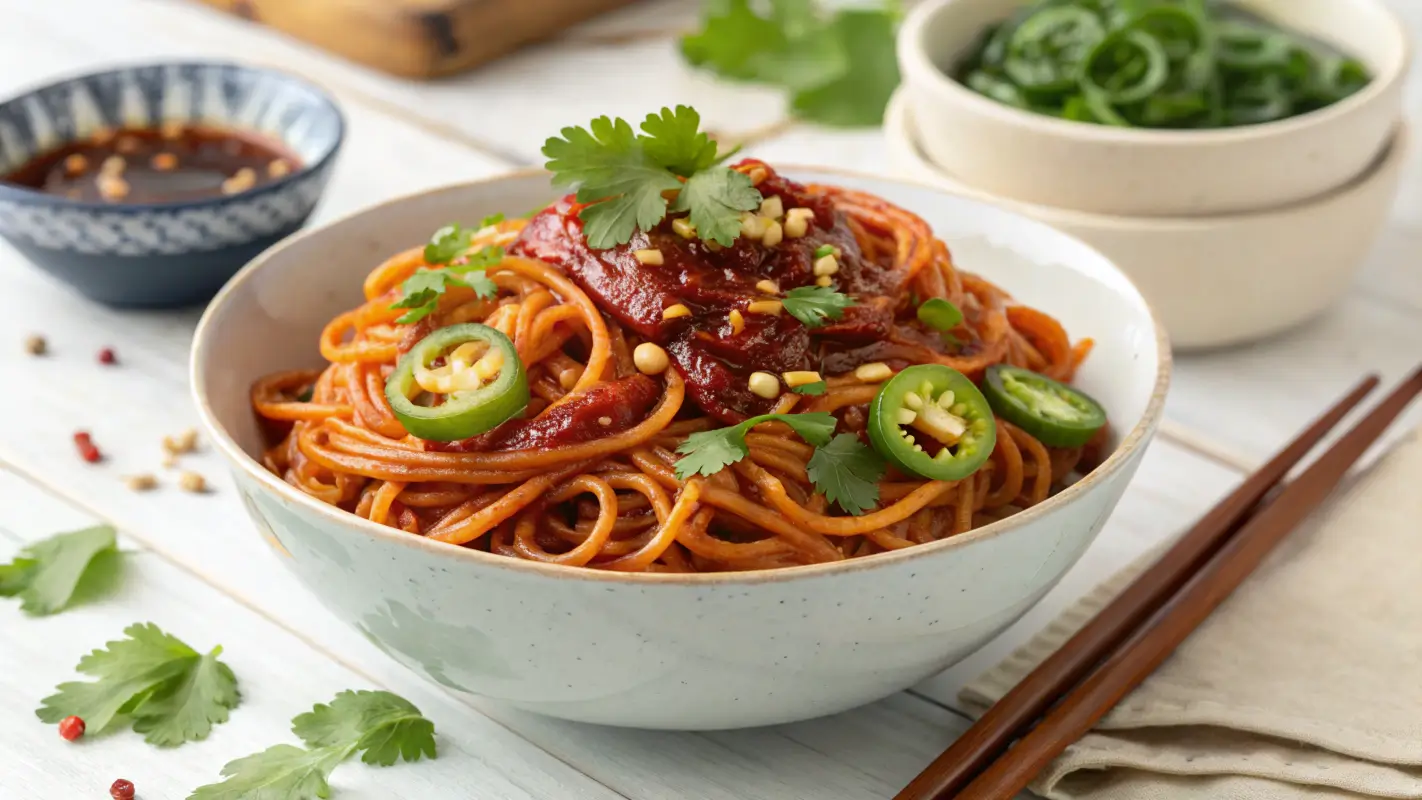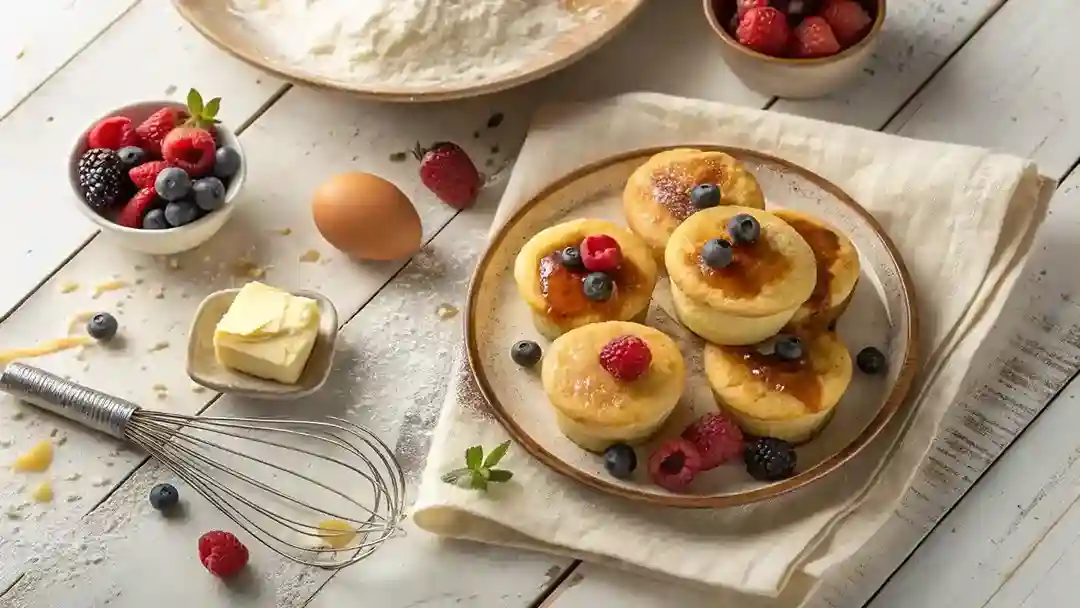Table of Contents
Creating your fish food recipe is a rewarding experience, allowing you to tailor meals for your fish’s unique dietary needs while saving money. This guide dives into the essentials of making homemade fish food, from understanding nutrition to crafting easy recipes. By the end of this article, you’ll have the confidence and knowledge to prepare nutrient-rich meals that your aquatic pets will love.
For more culinary experiments, check out this guide to Sardines Cracker Cheese
Introduction to Homemade Fish Food
What Is Homemade Fish Food?
Homemade fish food is precisely what it sounds like: a DIY approach to preparing nutritious meals for your fish. Unlike commercial options, which often contain fillers and preservatives, DIY fish food can be customized using fresh ingredients. It’s a great way to ensure your fish gets the best vitamins without harmful additives.
Why Consider DIY Options?
There are several benefits to creating your recipe for fish food. You save much money and control what goes into your fish food. Commercial foods are poor in essential nutrients and unsuitable for some species that need specific food requirements. You can address your fish’s specific dietary needs by making their food, which might be for herbivores, carnivores, or omnivores.
Benefits of Making Your Fish Food
- Healthier Fish: Fresh Elements to a more nutritious diet, reducing the risk of diseases.
- Eco-Friendly: Using leftover kitchen scraps can reduce waste while creating sustainable meals for your fish.
- Customizable Recipes: Tailor the texture, flavor, and nutrient profile to your fish’s preferences.
- Cost-Effective: Preparing fish food at home is often cheaper than purchasing premium store brands. over time
Homemade fish feeds are one way to practicalize the care you give your aquatic friends—considering diving into the world of fish feeding? Let’s get to know your fish better and learn their required nutrients at the next Party.
Understanding Fish NutritionaPartyds
Essential Nutrients for Healthy Fish
Fish, like any living creature, need a balanced diet to thrive. The foundation of a good fish food recipe includes proteins, fats, Carbs, vitamins, and minerals. Proteins are essential for growth and tissue repair, while fats provide energy. Minerals like calcium and phosphorus help build strong bones and scales.
Greens like spinach or seaweed are crucial for herbivorous fish, while carnivorous species benefit from protein-rich sources such as shrimp or fish fillets. Balancing these elements ensures your aquatic friends stay vibrant and healthy.
Differences in Diet for Freshwater and Saltwater Fish
These fish buy the food they choose based on very different dietary habits. While freshwater fish rely on peas and algae for such ingredients, saltwater fish lean towards krill and squid, protein-laden options. According to the species, a balanced diet promotes better digestion and avoids waste accumulation in your tank.
While designing a fish food recipe, consider your fish’s native habitat and feeding strategies. Fish have specific nutrient requirements, and feeding them the right mix usually mimics their wild diet, keeping them thriving.
The Role of Proteins, Vegetables, and Supplements
Proteins and vegetables are the building blocks of any excellent fish food recipe. Additives like spirulina powder, brewer’s yeast, or fish vitamins provide an extra nutritional boost. Spirulina, in particular, enhances immunity and coloration, making it a popular choice in DIY recipes.
Don’t forget supplements like omega-3 oils or crushed shells for calcium, especially for species with high mineral needs. These extras can make all the difference in maintaining a balanced and varied diet.
Ingredients for DIY Fish Food
Common Protein Sources: Shrimp, Fish Fillets, and Beef Heart
The protein in your fish food recipe is the main ingredient. Shrimp, fish fillets, and beef heart are excellent sources of lean, digestible protein. Shrimp is incredibly versatile and can be used for fresh and saltwater fish. Meanwhile, beef heart is a common choice for predatory species like cichlids due to its dense nutrient profile.
Using fresh, high-quality proteins ensures your fish get the nutrients they need to grow and stay healthy. Avoid processed meats, which may contain harmful additives.
Vegetable Additions: Spinach, Peas, and Carrots
Vegetables are an essential part of any balanced fish food recipe. Spinach and peas are fiber-rich, which supports digestion, while carrots contain carotenoids that enhance fish coloration. Blending these into your recipe provides Important nutrients and vitamins, especially for herbivorous fish.
Vegetables can also be pre-cooked or blanched to soften them, making them easier for fish to consume and digest. Don’t hesitate to mix different veggies for variety.
Unique Ingredients: Spirulina, Garlic, and Brewer’s Yeast
Including superfoods like spirulina and garlic can enrich the nutrient profile of your homemade fish feed formulation. Spirulina boosts immunity and encourages vibrant colors, while garlic enhances the taste and can act as a natural anti-parasitic.
Brewer’s yeast, on the other hand, is an excellent source of vitamin B and helps improve digestion. These ingredients are easy to find and can transform a basic recipe into a powerhouse of nutrients.
Optional Supplements: Vitamins and Omega-3 Oils
Supplements like fish vitamins and omega-3 oils are optional but highly recommended. They support immune function, improve skin and scale quality, and keep your fish active and healthy. Just a few drops in your mixture can provide these critical benefits.
Using the right combination of ingredients in your fish food recipe can ensure a nutritious and enjoyable diet for your aquatic pets. Next, we’ll explore how to turn these ingredients into a delicious meal at the next Party.
I was unable to aParty the inPartyl linking Chances from the provided URL. However, I’ll proceed with writing Parts 4 and 5 of the article. If you’d like, I can suggest a small separate Motivating reader to explore other recipe articles for more inspiration.
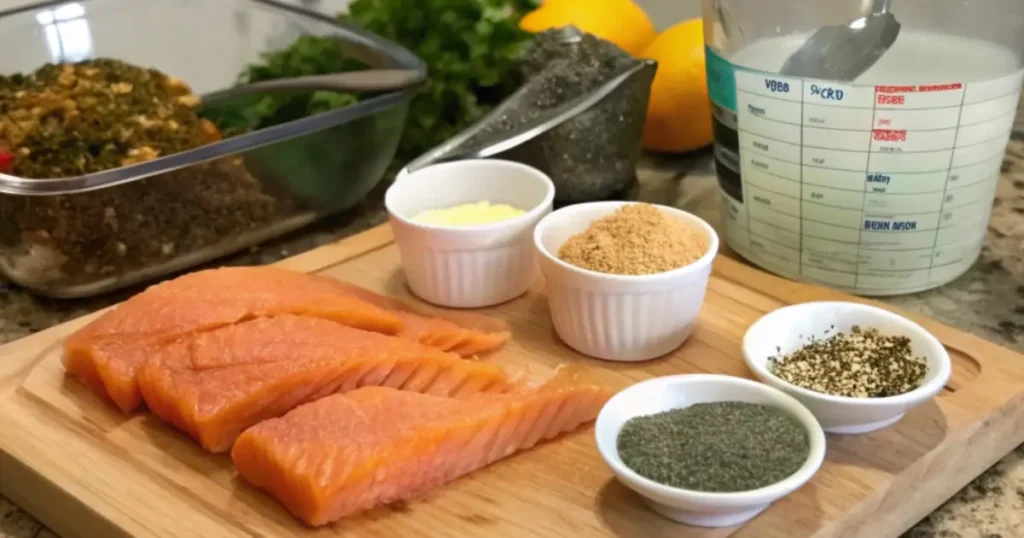
Step-by-Step Guide to Making Fish Food
Basic Gelatin-Based Recipe
A gelatin-based fish food recipe is one of the easiest and most effective ways to create nutritious meals for your fish. Here’s how to make it:
- Ingredients: Gather unflavored gelatin, pre-cooked vegetables like peas and carrots, protein sources (e.g., shrimp or fish), and Extra additives like spirulina or fish vitamins.
- Preparation: Blend the vegetables and protein into a smooth mixture. According to the package instructions, dissolve the gelatin in warm water.
- Mixing: Combine the gelatin and blend the mixture thoroughly.
- Setting: Pour the mix into shallow trays and refrigerate until firm.
- Cutting: Slice the firm gelatin into bite-sized cubes suitable for your fish.
This versatile recipe allows you to adjust the proportions based on your fish’s preferences.
Blended Fish Food Recipe
Blended recipes are perfect for those who prefer a straightforward approach. Combine fresh vegetables, proteins, and supplements in a blender until smooth. Then, freeze the mixture in silicone molds for easy portioning.
This method benefits small fish or fry, as the consistency can be made acceptable enough for their tiny mouths.
Customizing Recipes Based on Fish Type
Each species has unique dietary needs, so tweak your fish food recipe. Herbivorous fish thrive with a higher vegetable content, while carnivores need more protein. Add or remove ingredients based on your fish’s natural diet and observe their response to find the perfect balance.
Tips for Feeding and Storage
How to Feed DIY Fish Food Effectively
Feeding your homemade fish food is simple but requires some care. Break larger pieces into smaller bits to avoid overfeeding, and watch your fish during meals to ensure they’re eating everything.
This helps reduce waste, keeping the water clean and your fish happy.
For picky eaters, consider soaking the food in garlic extract or fish vitamins to enhance flavor and appeal.
Proper Storage to Maintain Freshness
It is vital to store your fish food recipes correctly. Freeze unused portions in an airtight container to preserve nutrients and prevent spoilage. To avoid contamination, always defrost only the amount you need for a single feeding session
If stored properly, homemade fish food can last up to three months in the freezer.
Avoiding Common Mistakes
While making and feeding your fish food recipe, avoid these pitfalls:
- Overfeeding: This can cloud the water and harm your fish.
- Skipping Key Ingredients: Ensure a balance of proteins, vegetables, and supplements.
- Improper Storage: Always store your food in a cool, dry place to maintain quality.
For more delicious recipes, check out other DIY ideas on our website. These will keep your fish meals exciting and nutritious. Let me know if you’d like additional suggestions.
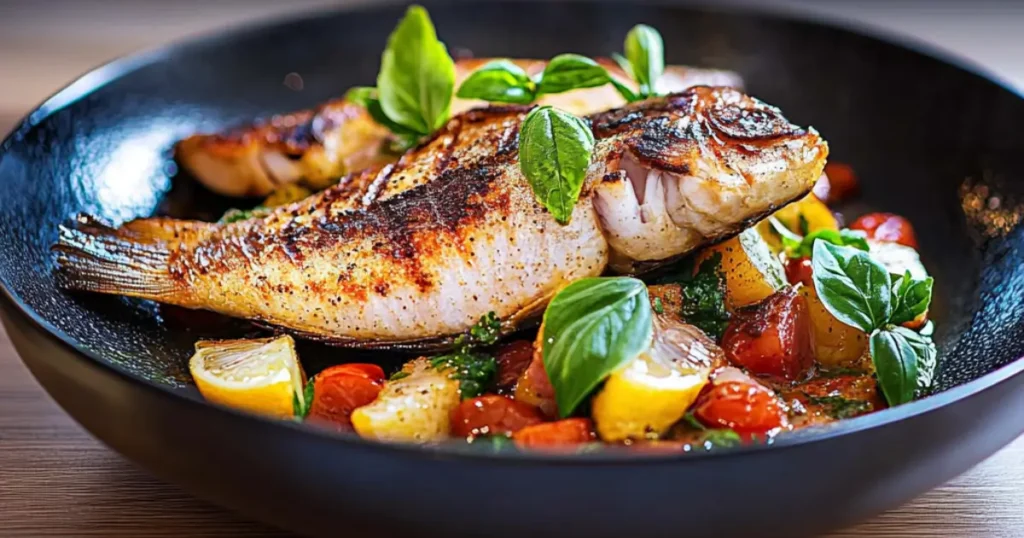
Frequently Asked Questions (FAQ)
Can I Use Store-Bought Ingredients for Homemade Fish Food?
Absolutely! Many Ready-made items work perfectly for your fish food recipe. Fresh or frozen shrimp, fish fillets, and vegetables like peas or spinach are widely available and budget-friendly. Just ensure the items you choose are free from harmful additives, preservatives, or seasoning, as these can harm your fish.
How Long Does Homemade Fish Food Last?
Homemade fish food typically lasts up to three months when stored properly in the freezer. Always use airtight containers or freezer bags to prevent freezer burn and keep the nutrients intact. When ready to feed, thaw only the portion you need to maintain freshness and avoid waste.
What Are Some Signs My Fish Enjoy the Food?
Fish will show enthusiasm for a good fish food recipe. Look for behaviors like eager swimming toward the food, quick consumption, and a vibrant appearance over time. If your fish ignore or spit out the food, you may need to tweak the recipe by adjusting the ingredients or texture.
Can I Include Fruits in Fish Food?
While vegetables are common, some fruits can be added in moderation. For example, small amounts of apples or zucchini can be blended into the mixture. However, avoid overly sweet or citrus fruits, which can disrupt the water’s pH balance.
Conclusion and Final Tips
Why Homemade Fish Food Is Worth the Effort
Crafting your fish food recipe is more than a cost-saving measure; it’s a chance to create personalized, nutrient-rich meals for your fish. The process may seem daunting initially, but the rewards are worth it. You’ll notice healthier, more active fish with improved coloration and vitality.
Encouragement to Experiment with Ingredients
Don’t hesitate to get creative with your recipes! Try different protein and vegetable combinations to see what works best for your aquatic pets. Over time, you’ll refine your approach and discover the perfect mix for their needs.
Closing Thoughts on DIY Fish Nutrition
Homemade fish food empowers you to control your fish’s death and ensures they receive the best care. With the knowledge in this guide, you’ll be equipped to provide nutritious meals promoting health, happiness, and longevity. Happy feeding!
Advanced Tips for Crafting Specialized Fish Food Recipes
Crafting Recipes for Herbivorous Fish
Herbivorous fish like plecos or some cichlids eat plant-based diets. The secret ingredient to have an effective fish food recipe for these species is to use vegetables such as spinach, kale, and peas. You can add some algae, particularly spirulina, to boost the food value and make it more appealing. Bind the ingredients with a gelatin or agar-based solution rather than floating them around the tank.
You can shape the mixture into flat wafers or thin shesheetsr habits for fish with specific grazing habits. This encourages natural feeding behavior and mimics how to fish forage in the wild. It also helps ensure the fish feel more comfortable and satisfied while eating, reducing food waste by making it easier for them to consume naturally.
Recipes for Carnivorous and Omnivorous Fish
Predatory fish thrive on protein-rich diets. To enhance their flavor and immunity, add shrimp or white fish fillets with beef heart to your fish food recipe. For omnivores, mix in a variety of vegetables with the protein sources. Garlic extract can also be included to boost flavor and immunity.
Try different blending methods to match various species and mouth sizes. Chunkier food works well for larger predatory fish, while finely blended portions are better for smaller fish.
Enhancing Recipes with Supplements
Supplements such as fish vitamins, omega oils, and calcium powder boost the nutritional value of homemade food. Slowly adding them provides enough nutrients for your pet fish. Additionally, the supplements assist immunity, growth, and vibrant coloration, which are the main benefits of adding them to any fish food recipe.
Success Stories and Real-Life Examples
Case Study 1: A Vibrant Reef Tank
An aquarist created a DIY fish food recipe for their mixed reef tank by combining shrimp, nori, and spirulina powder. Over a few months, they observed brighter colors in their clownfish and tangs and increased energy and appetite. The corals also thrived due to fewer uneaten food particles polluting the water.
Case Study 2: Revitalizing a Freshwater Community Tank
A fish keeper with a freshwater tank of gouramis and plecos made a plant-based food using peas, carrots, and algae. The fish adjusted well to the homemade food, significantly improving their health. The tank also stayed cleaner since the fish ate the food more entirely than Market-bought options.
Lessons Learned from DIY Fish Food Makers
Homemade fish food trials have many benefits. For instance, the main takeaway is to carefully observe your fish and adjust recipes to match their preferences and needs. This approach ensures your fish stays healthy and satisfied. However, it is worth every effort to appreciate the sight of healthy and happy fish.
Start by making a simple fish food recipe at home from scratch. After that, continue to gain your confidence and try to master advanced ingredients and techniques with the end goal of needing The benefits you give to your aquatic babies. Please let me know if you’d like more sections or More resources!
Check out Sardines Cracker Cheese: Delicious Snack Recipe or discover other exciting meal ideas on the website.

